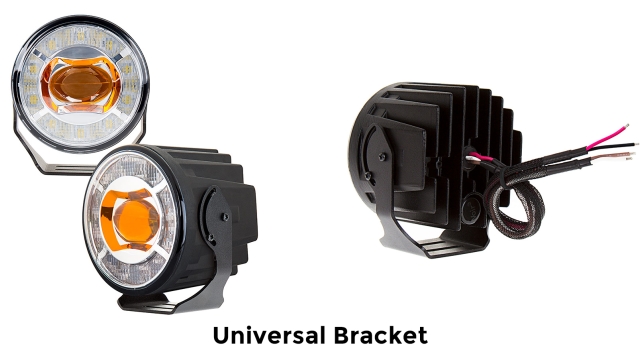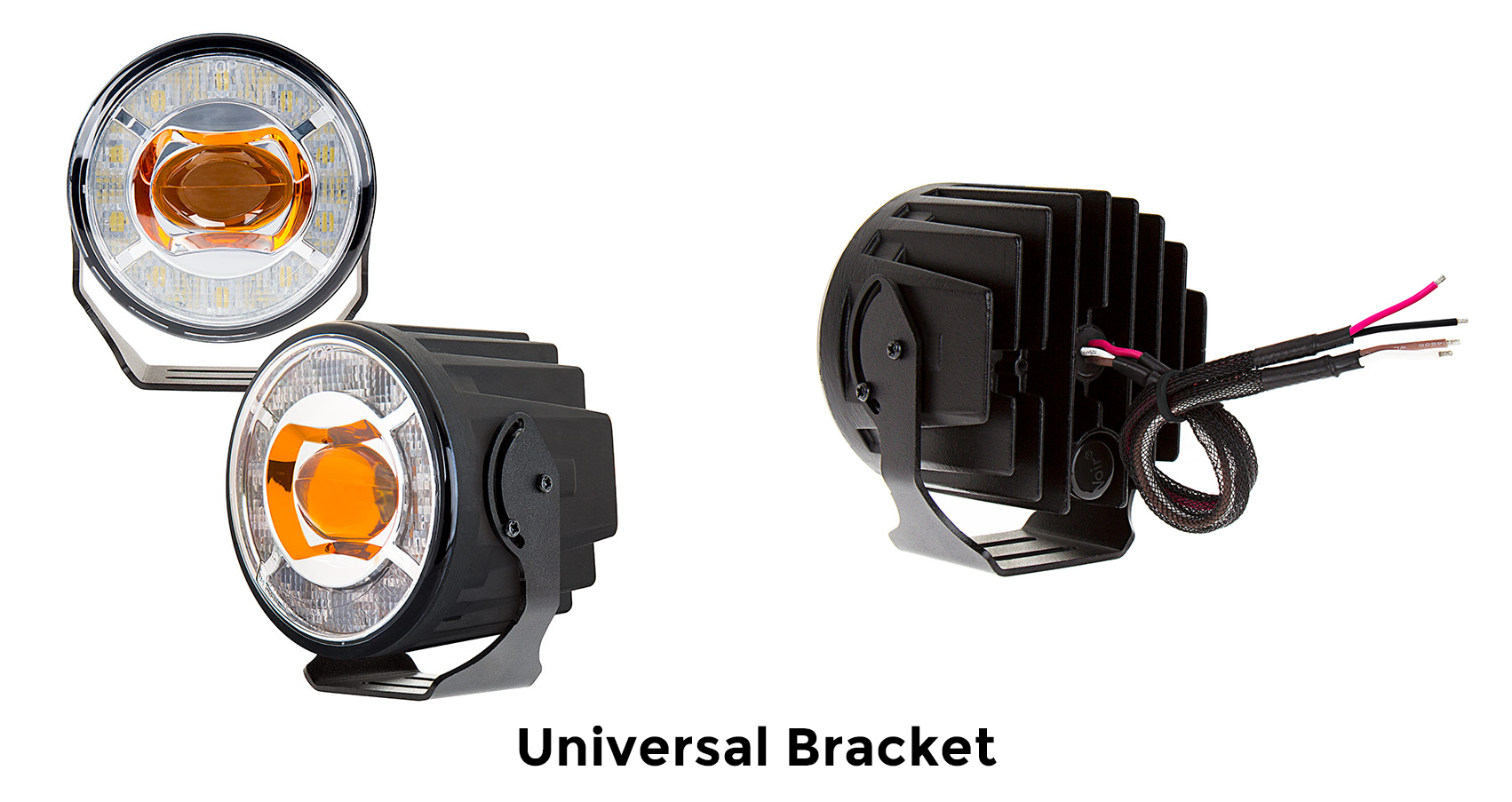Light Up the Road: Exploring the Power of LED Driving Lights
Joe Howard -
LED driving lights have revolutionized the way we illuminate the road, enhancing visibility and safety like never before. With their energy-efficient and powerful lighting capabilities, these cutting-edge lights are quickly becoming a top choice for drivers around the world. Whether you find yourself driving through dark country roads or navigating busy city streets, LED driving lights provide a bright and efficient solution that ensures you can see and be seen.
One of the key advantages of LED driving lights lies in their ability to produce a clear, focused beam of light that closely resembles daylight. Unlike traditional halogen lights, LEDs emit a bright white light that enhances visibility and reduces strain on the driver’s eyes. This is especially true during nighttime driving or in adverse weather conditions such as fog or heavy rain. LED driving lights have the power to illuminate the road ahead, helping drivers to anticipate any potential hazards and react accordingly.
Not only do LED driving lights provide exceptional illumination, but they also offer optimal energy efficiency. LEDs consume significantly less power compared to traditional halogen bulbs, ensuring that your vehicle’s battery and electrical system aren’t drained unnecessarily. This means you can enjoy improved lighting performance without compromising on battery life or fuel economy. LED driving lights are not only a practical choice, but also an environmentally conscious one.
In our article, we will delve deeper into the power of LED driving lights, exploring the various benefits they bring to drivers. From their durability and longevity to their versatile applications and ease of installation, these lights are a game-changer in the automotive industry. Join us on this illuminating journey as we uncover the transformative power of LED driving lights and how they have paved the way for safer and more efficient travels on the road.
Benefits of LED Driving Lights
LED driving lights offer numerous advantages when it comes to illuminating the road ahead. In this section, we will explore some of the key benefits of these modern lighting solutions.
LED driving lights are known for their exceptional brightness. They produce a powerful beam of light that effectively cuts through darkness and provides clear visibility, enhancing safety during nighttime or adverse weather conditions.
One of the standout features of LED driving lights is their energy efficiency. Compared to traditional halogen or incandescent lights, LEDs consume significantly less power, making them a more eco-friendly choice. This not only reduces fuel consumption but also extends the lifespan of the vehicle’s battery.
Furthermore, LED driving lights boast an impressive lifespan themselves. They are highly durable and can last up to 50,000 hours or more. This longevity translates into less frequent replacements and reduced maintenance costs for vehicle owners.
In summary, LED driving lights offer enhanced brightness, energy efficiency, and longevity compared to traditional lighting options. With these benefits, they prove to be a valuable asset for drivers looking to illuminate the road and ensure a safer driving experience.
Factors to Consider When Choosing LED Driving Lights
-
Beam Pattern: When selecting LED driving lights, it is crucial to consider the beam pattern they offer. The beam pattern determines the spread and direction of light emitted by the lights. Different driving conditions may require specific beam patterns to optimize visibility. For example, a spotlight beam pattern focuses the light in a long and narrow direction, making it ideal for long-range visibility. On the other hand, a floodlight beam pattern provides a wider spread of light, making it suitable for off-road driving or illuminating a larger area.
-
Brightness and Lumens: Another important factor to consider is the brightness of the LED driving lights. Brightness is typically measured in lumens, which indicates the total amount of light emitted by the lights. Higher lumens translate to brighter lights, improving visibility on the road. However, it is essential to strike a balance between brightness and glare, as excessively bright lights can potentially blind other drivers and create unsafe conditions. Consequently, it is advisable to choose LED driving lights with a suitable lumen output for your specific needs.
-
Durability and Weather Resistance: LED driving lights are often exposed to harsh environments and challenging weather conditions. Therefore, it is crucial to select lights that are durable and weather-resistant. Look for lights with a sturdy construction and a high IP (Ingress Protection) rating, indicating their resistance to dust and water intrusion. This ensures that the lights can withstand rough off-road terrains, heavy rain, or extreme temperatures, providing reliable performance over time.
Remember, when choosing LED driving lights, it is essential to consider the beam pattern, brightness and lumens, as well as the durability and weather resistance. By taking these factors into account, you can make an informed decision and enhance your driving experience with reliable and effective LED driving lights.
Installation and Maintenance Tips for LED Driving Lights
When it comes to installing LED driving lights, there are a few key steps to consider. First, ensure that you have all the necessary tools and equipment on hand before you begin. This will include items such as a drill, screws, brackets, and a wiring harness. It’s also important to read the manufacturer’s instructions thoroughly to understand the specific requirements for your LED driving lights.
Next, choose the ideal mounting location for your lights. This will depend on the type of vehicle you have and your personal preferences. Common mounting areas include the front bumper, grille, or roof rack. Make sure the location allows for proper visibility without obstructing any other important vehicle components.
Once you’ve chosen the mounting location, use a drill to create holes for the screws or brackets. Secure the LED driving lights in place, ensuring they are firmly attached. Take care not to overtighten the screws, as this could damage the lights or the mounting surface.
After the lights are securely mounted, it’s time to connect the wiring harness. This involves connecting the positive and negative wires from the driving lights to the corresponding wires in your vehicle’s electrical system. Use wire connectors or soldering to ensure a secure connection. Be sure to follow the instructions provided by the manufacturer to properly connect the wiring.
Maintenance of LED driving lights is relatively simple. Regularly inspect the lights for any signs of damage or wear, such as cracked lenses or loose connections. Clean the lights using a mild detergent and water solution, and avoid using abrasive materials that could scratch the lens.
Additionally, check the aim of the lights periodically to ensure they are properly aligned. Adjust the angle if necessary to optimize visibility while driving at night. Taking these steps will help ensure that your LED driving lights provide long-lasting illumination and enhance your driving experience.

Archives
- November 2025
- October 2025
- September 2025
- August 2025
- July 2025
- June 2025
- May 2025
- April 2025
- March 2025
- February 2025
- January 2025
- December 2024
- March 2024
- February 2024
- January 2024
- December 2023
- November 2023
- October 2023
- September 2023
- August 2023
- July 2023
- June 2023
- May 2023
- April 2023
- March 2023
- February 2023
- January 2023
- December 2022
- November 2022
- October 2022
- September 2022
- August 2022
- July 2022
- June 2022
- May 2022
- April 2022
- March 2022
- February 2022
- January 2022
Calendar
| M | T | W | T | F | S | S |
|---|---|---|---|---|---|---|
| 1 | 2 | 3 | 4 | 5 | 6 | 7 |
| 8 | 9 | 10 | 11 | 12 | 13 | 14 |
| 15 | 16 | 17 | 18 | 19 | 20 | 21 |
| 22 | 23 | 24 | 25 | 26 | 27 | 28 |
| 29 | 30 | 31 | ||||